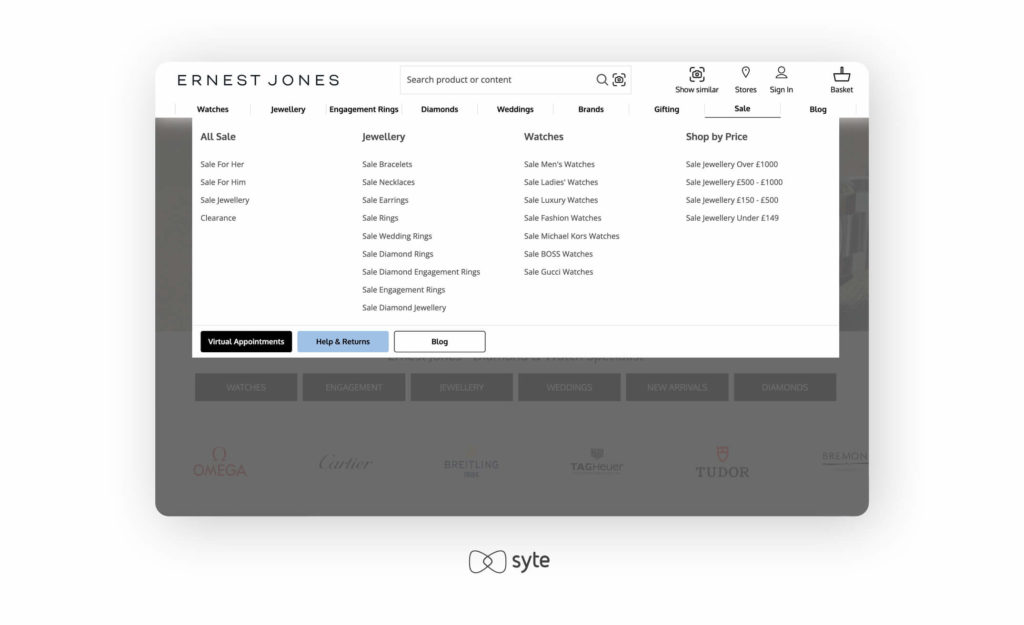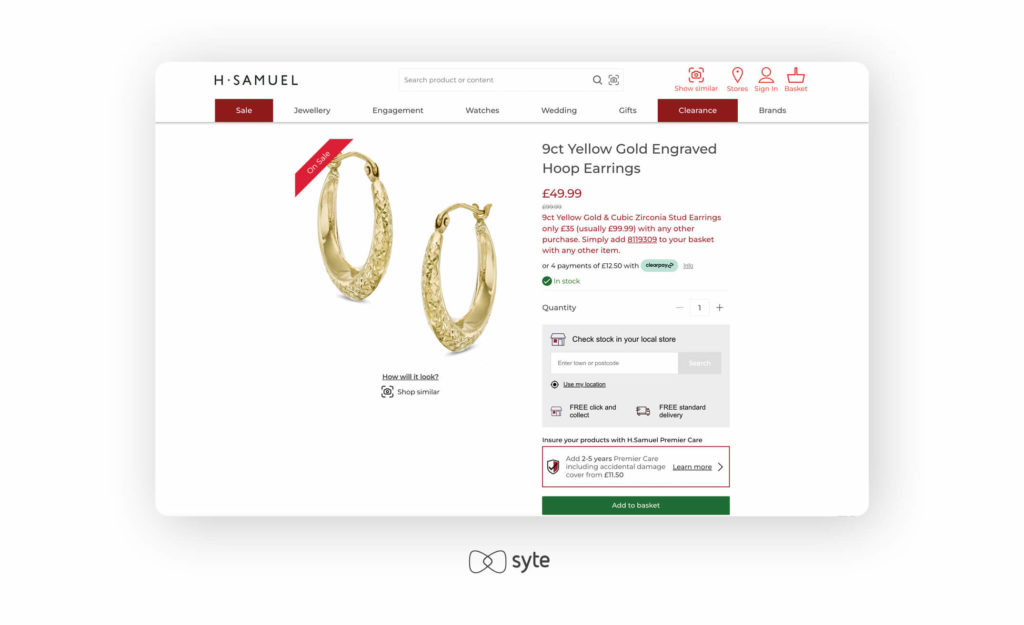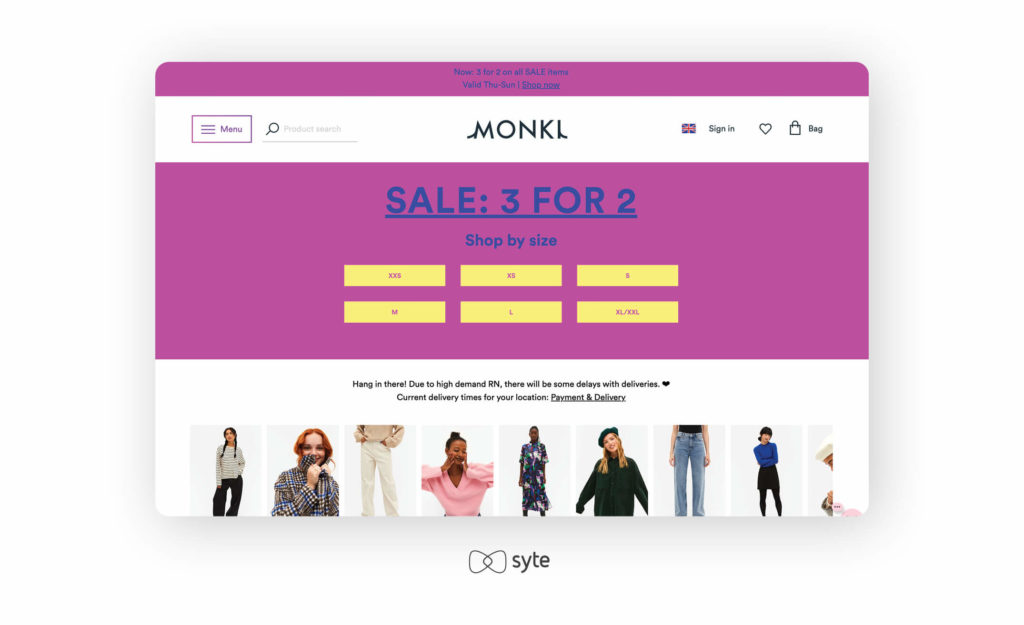For decades, Black Friday Cyber Monday (BFCM) has drawn in customer segments driven by discounts. Given the economic status quo, price-conscious consumers are only expected to increase in number.
When price is the biggest consideration for your shoppers, how can you position your products and brand for success? And how can you tailor your approach as inflation and supply chain issues continue to affect retail?
Factors Driving Scaled Back Spending
Today’s customers are heavily burdened by rapid price hikes arising from inflation. In the US, the inflation rate is at a 40-year high of 8.6%. According to the Pew Research Center, 37 of 44 economically significant countries saw their inflation rates double since 2020.
Customers become nervous and consequently change their purchasing habits when faced with uncertainty. They reprioritize their spending, allocating money to necessities rather than nice-to-have purchases. A study from the National Retail Federation found that half of US consumers are shopping for cheaper alternatives and looking for discounts due to inflation. Moreover, 40% are making cuts to afford necessities. Coupled with job insecurity and debts, inflation is prompting consumers to save rather than spend.
Holiday spending will continue, but brands and retailers are expected to see lower spending per consumer. Even with the increase in shopper optimism based on the results of the latest Forbes Advisor-Ipsos Consumer Confidence poll, customers will continue to watch their budgets.
Prosper Insights & Analytics revealed that half of consumers plan to spend less on their holiday gifts, and at least 28.6% will only buy items on sale. Inflation is a primary reason for 38% of shoppers. Less generous deals due to supply chain issues and inflation also won’t help customers who are expecting lofty discounts. More than half of consumers experienced higher prices in 2021 and 37% found fewer discounts than the previous year.
Focusing on Consumer Spending Patterns
When customers choose to spend money on fewer items or none at all, businesses are left to deal with the increase in operational costs. This covers overstock and stagnant inventory, both of which impact businesses in the long run.
With price-sensitive customers adjusting their spending and no longer encouraged by discounts, retailers will need to rethink their approach. Even when shoppers are motivated by price, their response to discounts will differ, which renders blanket pricing strategies ineffective.
Brands will have to consider other factors that sway purchase decisions, such as customer intent and context. This knowledge will be indispensable in winning over consumers. You will also be able to better understand how price changes and timing impact your bottom line.
How Price Plays into Smart Merchandising During BFCM
Effective online merchandising enables you to surface the right products at precisely the right moment for customers. Smart merchandising ensures interactions are impactful and increases the likelihood of purchases.
How you set up smart merchandising for BFCM matters. When it comes to price-sensitive customers, you should connect them to relevant items and match their unique preferences while taking their budget into account. The journey doesn’t have to end if a specific product is out of stock. Merchandising can guarantee continuous product discovery. When a shopper expresses interest in items within a specific price range, eCommerce tech can provide other options falling within that bracket.
The Price-Conscious Consumer
The Boston Consulting Group found that among those who identify as value-conscious consumers in the US, only 10% intentionally picked the least expensive options. Consumers were interested in quality, convenience, and sustainability, and Gen Z shoppers were more price-sensitive than Gen X and Boomers.
Price-conscious consumers weigh the quality of a product against the asking price. Time is also of the essence, with a 2018 study reporting that price-conscious consumers tended to be quick decision-makers who made associations between keywords (e.g., “imported,” “organic,” etc.) and cost.
In today’s climate, the profile of the price-conscious customer is ever-evolving. Because of inflation, 37% of US shoppers and 42% of global buyers are planning to purchase presents earlier for budgetary reasons and to avoid future price hikes. They’re also more likely to turn to eCommerce for convenience and opt for free shipping or in-store pickups.
12 Ways to Build Customer Experiences for the Price-Conscious
1. Incentivize Loyalty
According to Salesforce, almost half of shoppers are expected to forego their preferred brands in favor of competitors offering lower prices. To counteract this, you can offer customers discounts and cost-efficient shipping. Ardene’s VIP Club promises everyday perks, early promo access, and double discounts, which all appeal to price-sensitive customers.
2. Rank Items According to Price
If consumers are after items within a specific price range, it doesn’t make sense for them to see products beyond their budget. Implement merchandising rules to save customers the frustration of finding something they like only to be turned away because of the cost. Your website can be set up to promote SKUs within 10-30% of an item’s price range. You can also adjust such merchandising rules to include seasonal, popular, and clearance products. For example, La Redoute’s add-on suggestions are within the same price range. They also indicate original prices to further emphasize the discounts.
3. Create Strategic Displays on Your Website
Guide customers to products that align with their tastes and budget with recommendation engines driven by on-site interactions. You can implement these from the homepage to the checkout page. When buyers see products they like, they’ll be more inclined to add them to their carts.
This can be amplified by user-generated content (UGC), a valuable resource for social proof, which provides inspiration, IRL clout, and increases your brand’s credibility. Musinsa uses UGC content as featured covers of thematic product galleries to inspire shoppers to explore more.
4. Attract Shoppers With Price-Centric Product Collections
As mentioned earlier, consumers who shop based on price are quick decision makers. With a specific budget in mind, ensuring the on-site experience guides them to products that fit the bill can improve sales and make for memorable customer journeys. If consumers associate your brand with positive experiences, they’re likely to return. Ernest Jones makes use of this strategy in its navigation for quick access.

5. Personalize the Retail Experience Through Technology
Shoppers, regardless of motivations, like to feel valued. This translates to customer journeys acknowledging their unique preferences. There are several ways to make shoppers feel special — from curating content based on browsing history and past purchases to ensuring product suggestions reflect their real-time intent.
One cool way to impress your customers is by making the search experience on your site as seamless as possible. Are your customers at a loss for words? No problem, they can use an on-site visual search tool. In this way, they’ll only explore items matching what they’re looking for and filter based on price.
6. Ease the Decision-Making Process
One obstacle that keeps customers from shopping online is the inability to try on products in person. eCommerce tech has come a long way and now offers options like visual try-ons with personalized recommendations. Zalando’s 3D fitting rooms encourage shoppers to check if the items they like are a suitable fit. Customers are not left to their own devices, which helps with making informed purchase decisions.
7. Be Transparent About Prices
Transparency should be a constant to ensure shoppers can make well-rounded decisions. Communicate the full extent of the transaction — from the discounted price to the shipping cost, taxes, and customs charges. Avoid last-minute surprises that could prompt customers to abandon their carts. H.Samuel addresses this by making sure to communicate price changes to shoppers before they move on to the checkout page.

8. Remove Doubts in the Buying Journey
Tight customer budgets leave no room for extra expenses like returns and shipping fees. City Furniture has an active product detail page (PDP) designed to address any doubts buyers may have. In addition to detailed product descriptions, a community Q&A section highlights common concerns from fellow shoppers. The chatbot is also easily accessible to customers.
9. Take Advantage of Bundle Pricing
Bundles help increase the perceived value of a purchase. They can be used to inspire customers to expand their wardrobes, complete room furnishings, or build up their jewelry collection all while saving money in the long term. Monki packages its discounted items in a way that encourages shoppers to purchase everyday items for less.

10. Communicate the Quality of Your Products
Emphasize the benefits and features that make your products and services stand out from the competition. Supporting a cause is one way to make shoppers feel their money is going towards the greater good.
For Coleman Furniture, the added incentives that edge out the competition are free shipping and setup. The brand strategically places this offer beside categories where white-glove services are applicable.
11. Create a Sense of Urgency for Sale Items
To capture the attention of price-conscious shoppers, create a sense of urgency for your sale items. Experiment with time-based offers, hourly drops, or exclusive promos. For Chubbies, there are subtle nuances in the messaging used. The added “Final Sale” as opposed to simply slashing off the original price can be the push shoppers need to complete a purchase.
12. Provide Value Through Knowledge
Besides establishing industry credibility, strong content helps brands connect with customers who are overwhelmed by choices or do not know where to start. Shoppers appreciate useful information, whether guides, podcasts, infographics, videos, or blogs. Chow Sang Sang has a guide for engaged couples and is a form of evergreen content that is valuable all year round.
Deliver Experiences Price-Conscious Consumers Will Love
To win over price-conscious consumers, brands and retailers must provide more value for each purchase throughout the customer journey. Perceived value can matter just as much as the actual price to shoppers who are scaling back their spending habits. The 12 merchandising strategies will help communicate this to attract customers and build long-lasting connections.